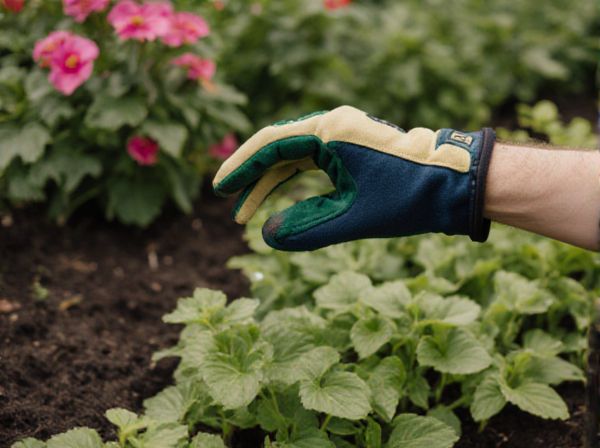
Chiller vs Aquarium heater Illustration
A chiller and an aquarium heater serve opposite functions in hydroponic systems, with chillers reducing water temperature to prevent root overheating, while heaters maintain optimal warmth during colder conditions. Proper temperature regulation enhances nutrient uptake and plant growth by creating a stable root environment. Selecting between a chiller and heater depends on climate control needs to optimize hydroponic crop yields.
Table of Comparison
| Feature | Hydroponic Chiller | Aquarium Heater |
|---|---|---|
| Purpose | Maintains optimal nutrient solution temperature by cooling | Maintains optimal nutrient solution temperature by heating |
| Temperature Range | Typically 40degF to 70degF (4degC to 21degC) | Typically 68degF to 86degF (20degC to 30degC) |
| Usage | Used in warm climates to prevent heat stress | Used in cold climates to prevent root damage |
| Power Consumption | Higher, depends on chiller capacity | Lower, usually between 25W to 300W |
| Cost | Higher initial and operational cost | Low initial cost, affordable |
| Installation | Complex, requires plumbing and space | Simple, plug-and-play |
| Maintenance | Requires regular cleaning and refrigerant checks | Minimal maintenance |
| Ideal for | Large hydroponic systems in hot environments | Small to medium systems in cooler environments |
Introduction to Temperature Control in Hydroponic Systems
Hydroponic systems rely on precise temperature control to optimize nutrient solution conditions for plant growth, where chillers maintain cooler water temperatures typically between 55degF to 68degF, preventing root diseases and enhancing oxygenation. Aquarium heaters, designed to keep water warm within a range of 72degF to 82degF, support tropical plant varieties that thrive in higher temperatures but lack the capacity to cool down overly warm nutrient solutions. Selecting between chillers and aquarium heaters depends on the specific temperature requirements of the hydroponic crop and environmental conditions to ensure optimal root zone health and nutrient uptake.
Understanding the Role of Water Chillers
Water chillers regulate nutrient solution temperatures in hydroponic systems, preventing heat stress and promoting optimal root growth. Unlike aquarium heaters that raise temperature, chillers maintain cooler water environments essential for certain crops like lettuce and herbs. Efficient temperature control with water chillers reduces pathogen growth and improves oxygen availability, ensuring healthier plants and higher yields.
Benefits of Using Aquarium Heaters in Hydroponics
Aquarium heaters provide precise temperature control essential for maintaining optimal root zone conditions in hydroponic systems, promoting nutrient uptake and plant growth. Unlike chillers, heaters prevent cold stress during cooler periods, ensuring consistent water temperatures that enhance microbial activity and nutrient absorption. Their energy efficiency and compact design make aquarium heaters a cost-effective solution for stable temperature management in small to medium-scale hydroponic setups.
Chiller vs Aquarium Heater: Key Differences
Chillers regulate hydroponic nutrient solution temperature by cooling it to prevent root zone overheating, while aquarium heaters maintain consistent warmth for aquatic plants in cooler environments. Unlike aquarium heaters that increase temperature, chillers lower it, crucial for hydroponic systems where root health depends on optimal cool conditions around 65-75degF (18-24degC). Efficient temperature control ensures nutrient uptake and plant growth, making chillers essential for warm climates and aquarium heaters suitable for colder setups.
Ideal Temperature Ranges for Hydroponic Growth
Hydroponic systems thrive within a temperature range of 65degF to 75degF (18degC to 24degC) to optimize nutrient uptake and root development. Chillers maintain water temperatures below this range, often between 55degF to 65degF (13degC to 18degC), preventing heat stress in warm climates. Aquarium heaters are used to raise temperatures when the environment drops below the ideal range, ensuring consistent root zone warmth essential for plant growth and nutrient absorption.
Energy Efficiency: Chillers Compared to Heaters
Chillers in hydroponic systems consume significantly more energy than aquarium heaters due to the cooling mechanisms required to lower water temperatures effectively. While chillers operate using compressors and refrigerants that increase electricity usage, aquarium heaters rely on simple resistive heating elements with lower power demands. Selecting the appropriate device depends on temperature goals, but heaters generally offer greater energy efficiency for maintaining warm water conditions in controlled environments.
Installation and Maintenance Considerations
Installing a chiller in a hydroponic system requires careful placement near water reservoirs to ensure efficient cooling, with consideration for ventilation and drainage to manage condensation. Aquarium heaters demand straightforward submersion into the nutrient solution, with easy access for monitoring and adjustment, though frequent cleaning is necessary to prevent mineral buildup. Maintenance of chillers involves regular filter cleaning and refrigerant checks, while heaters require routine inspection of heating elements and thermostat functionality to maintain optimal water temperatures.
Cost Analysis: Chiller vs Aquarium Heater
Chillers typically incur higher upfront costs and energy consumption compared to aquarium heaters, making them a more significant investment for hydroponic systems requiring precise temperature control. Aquarium heaters, while more affordable and energy-efficient, may not provide the consistent cooling needed in large-scale hydroponic setups. Evaluating the total operational expenses, including maintenance and power usage, is crucial for optimizing cost-effectiveness between chillers and aquarium heaters in hydroponic environments.
Choosing the Right Option for Your Hydroponic Setup
Selecting the right temperature control device for hydroponic systems hinges on maintaining optimal water temperatures between 65-75degF for nutrient solution stability. Hydroponic chillers efficiently cool water to prevent root damage and algae growth in warmer climates, while aquarium heaters ensure consistent warmth essential for cooler environments or specific plant species. Evaluating your local climate, crop requirements, and system size guides choosing between chillers for cooling or heaters for warming to maximize plant health and yield.
Final Thoughts: Optimizing Hydroponic Water Temperature
Maintaining optimal water temperature in hydroponic systems requires choosing between chillers and aquarium heaters based on specific crop needs and environmental conditions. Chillers effectively lower water temperature to prevent root diseases and promote oxygen availability, while aquarium heaters stabilize temperature during colder periods to enhance nutrient absorption and growth rates. Balancing these temperature control tools can significantly improve plant health and maximize hydroponic yields.
Chiller vs Aquarium heater Infographic

 gardendif.com
gardendif.com